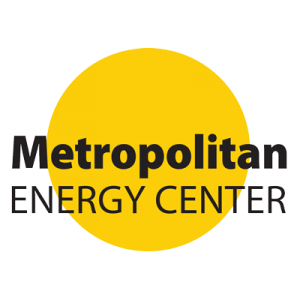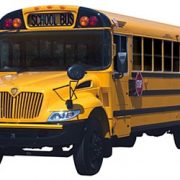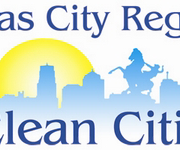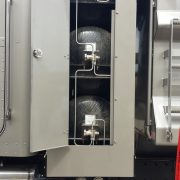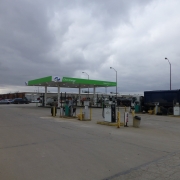The Missouri Department of Natural Resources’ Air Pollution Control Program is expecting to receive a grant from the U.S. Environmental Protection Agency (EPA). The grant funding comes from a federal program called the Diesel Emission Reduction Act (DERA). The funding for this program is not part of the Volkswagen Settlement. Details about the process for awarding Volkswagen funds are still forthcoming.
The department has run numerous DERA grant programs in the past nine years. This year, like the last two years, the department plans to use the grant to fund a clean diesel early school bus replacement program in Missouri.
Owners of diesel school buses stationed and operating in Missouri are eligible to apply for funding. If selected, awardees will receive up to 25% of the cost of the new school bus(es) with a maximum award of $18,000 per bus, and applicants may apply for two school buses. The newly purchased bus(es) must replace a bus(es) that is currently in use and has an engine model year within the range of 1995 – 2006. The new buses must be “early” replacements, meaning they are not already planned for replacement and would not be replaced if not for this funding opportunity.
A Request for Applications (RFA) is posted on the Departments Webpage: http://dnr.mo.gov/env/apcp/cleandieselprogram.htm, along with a fill-in-the-blank application form. This RFA is open to both public and private school bus owners/operators in Missouri.
The deadline to submit applications is August 31, 2017.
The Department will review all applications received for eligibility, and will select awardees through a random drawing ensuring that all eligible applicants have an equal chance to receive funding through this opportunity.
Please visit the webpage listed above and download the RFA and the Application Form.
If you have any questions about this funding opportunity for early school bus replacements in Missouri, please feel free to contact Mark Leath at the Missouri Department of Natural Resources; (573) 526-5503.
JOB DESCRIPTION: Internship supporting energy-related programs for Metropolitan Energy Center, specifically for the Kansas City Regional and the Central Kansas Clean Cities Coalitions. We will consider the intern’s program interests […]
Because of its NOx emissions cheating, Volkswagen is being held responsible for both recalling diesel vehicles that have violated US emissions standards and paying penalties issued by the EPA. Penalty funds will be used to increase investments in zero emission vehicle (ZEV) deployments and projects that offset the NOx emissions that were produced by the substandard vehicles.
Here are links to White Papers on Recommendations for Kansas’ VW Settlement Program and Recommendations for Missouri’s VW Settlement Program.
More information coming soon.
Metropolitan Energy Center (MEC) and Kansas City Regional Clean Cities Coalition are proud to announce a clean transportation double feature on August 2nd and 3rd at Wilson’s Creek National Battlefield just south of Springfield, Mo. Along with our host and partners from the National Park Service, MEC will be celebrating the official roll-out of the park’s new green equipment and vehicle fleet. And, along with local sponsors, supporters and fans of green-tech cars, we’ll be there to cheer on entrants from 25 different worldwide universities in the American Solar Challenge, an event that is traveling 1,975 miles through nine parks and six states this year, running solely on sunlight. Visitors will be able to see the solar cars up close at Republic High School, 4370 Repmo Drive, Republic, MO, 65738 on Tuesday, August 2, between about 4:00 and 8:00 pm. Team members will be happy to answer your questions, and all kinds of information and activities will be available – even solar-powered s’mores. On Wednesday, August 3, the public is invited to visit the Battlefield where the cars charge up, and then take off for their next destination between 8:00 and 10:00 am.
MEC’s fleet-greening efforts will save fuel, cut emissions and clean the air at Wilson’s Creek for years to come. Thanks to the Clean Cities National Parks Initiative (CCNPI), four diesel and gasoline mowers have already been replaced by propane models, and a new plug-in hybrid car will replace a conventional hybrid vehicle for park staff. Funding from CCNPI helps limit petroleum consumption, cut greenhouse gas emissions and enhance the sustainability of park fleets. CCNPI began in 2010 with three projects nationwide. Five years later, more than 30 parks, monuments and historic sites around America have participated, in the process cutting climate impacts and cleaning the air for everyone. Wilson’s Creek is the 2nd park to participate in Kansas or Missouri, after Nicodemus National Historic Site in 2014.
In this year’s centennial celebration of the Park Service, it’s hard to think of a better way to celebrate than helping deploy technologies and fuels that can help protect America’s national treasures for another hundred years. For additional details on the American Solar Challenge’s visit to Wilson’s Creek, visit NPS . For more information about the CCNPI, visit the U.S. Department of Energy’s Clean Cities website.
UMKC turns on the juice for recycling
By Jerry LaMartina
Metropolitan Energy Center, freelance writer
Chances are, Thomas Edison would’ve flashed his bulb at the University of Missouri-Kansas City’s choice of a truck to pick up recycling materials and deliver building supplies.
It’s a Newton, made by Smith Electric Vehicles.
UMKC put the truck into service in December 2010, with help from a Clean Cities grant of $111,000 from the U.S. Department of Energy (DOE). The money UMKC received was part of a $15 million Clean Cities grant awarded in December 2009. The overall grant also benefited several municipalities and companies in the Kansas City area and elsewhere that had implemented alternative-fuel projects. The grant was administered by Kansas City-based Metropolitan Energy Center (MEC) through a contract with the DOE. All the projects supported by the grant constitute MEC’s Midwest Region Alternative Fuels Project.
The UMKC project’s overall cost was $157,000, which included the electric truck and one electric-vehicle charging station on the university’s campus for public use. UMKC matched the Clean Cities grant with about $46,000 of its own money, says Henry Marsh, UMKC’s fleet manager. The public charging station went into service in April 2011. UMKC has since added three others.
“We wanted to start an electric infrastructure for people to charge their cars,” Marsh says.
UMKC puts an average of about 4,500 miles a year on its service vehicles, mostly with stop-and-go driving. The Newton, which replaced a gasoline-fueled truck, has displaced about 900 gallons of gas a year since UMKC put it into service.
“An electric truck is perfect for this kind of driving,” UMKC said in its final report to the DOE. The truck does not require any warm up to be efficient.”
Marsh says he’d been familiar with electric trucks when he attended an alternative-fuels conference.
“I saw an electric truck on display and I thought this would be a perfect application for our purposes,” he says.
The Newton’s drivers think of it as “a new toy,” Marsh says. Their only complaint has been that it’s too slow going up hills when fully loaded, but it gets the job done even then, he says.
Marsh has gotten calls from two universities in other states with questions about the Newton and how it’s been working out for UMKC.
“According to Smith Electric, we were the first university in the nation to buy one of their electric vehicles,” he says.
His advice to those thinking of buying an electric vehicle is, first, consider carefully how it will be used, and make sure its capabilities match the intended use. The truck is expensive, he says, “and if we had to buy that truck outright, the monetary payback would’ve been hard to justify.”
“There are fleets that are a lot bigger than ours, and they can see and measure a payback on it,” Marsh says.
That money savings, which takes time to achieve, plus the sustainability issue and the evolving electric technology itself will drive increased use of electric vehicles, he says.
*************************************
Lamartina.jerry@gmail.com
MUD’s rolling around in the CNG
By Jerry LaMartina
Metropolitan Energy Center
The Metropolitan Utilities District of Omaha is used to going it alone and forming partnerships when it comes to adopting and expanding its use of alternative fuels.
MUD first started using natural gas vehicles (NGVs) and compressed natural gas (CNG) fueling equipment in its operations in the early 1980s. NGVs include vehicles fueled by CNG and by liquefied natural gas.
At the end of 2013, MUD had more than 150 vehicles fueled by CNG, or roughly 40 percent of its 375-vehicle fleet.
One of its recent CNG expansions came in the form of 42 CNG vehicles and two CNG fueling stations, funded in part from $1.6 million awarded to it and several partners from a $15 million U.S. Department of Energy (DOE) Clean Cities grant awarded in December 2009. The overall grant also benefited several other municipalities and companies for alternative-fuel projects and was administered by Kansas City-based Metropolitan Energy Center (MEC) for the DOE. All the projects supported by the grant constitute MEC’s Midwest Region Alternative Fuels Project.
Mike Corrigan, MUD’s natural gas vehicle specialist, says the utility’s watchwords are environmental, economic and energy-independent. The economic leg of that stool showed itself in 2008 when fuel prices rose. This prompted MUD’s customers to ask the public utility about adding a public-access CNG station, Corrigan says.
“We’ve traditionally generated our revenue based on household and residential use, both of which have been declining, so we were looking toward other revenue sources,” he says. “Before 2008 or 2009, it wasn’t viable to move toward an increased percentage of CNG vehicles in our fleet, because of financial limitations and limited vehicle systems availability.”
Now, though, he thinks he’ll eventually see his whole fleet switch to CNG. MUD has added more than 40 CNG vehicles since this Clean Cities-funded project, all without grant funding.
Corrigan embraces CNG mainly because “it’s clean and it’s American.”
“At the end of the day, I’m glad to tell my kids that I’m doing something to reduce our emissions and reduce our dependence on foreign oil,” he says.
Those environmental and energy-independence concerns, along with economic ones, are common motivators for those who consider making the switch to alternative fuels.
“There’s a quandary of the chicken and the egg,” Corrigan says. “Do you build stations first or get CNG vehicles first?”
His advice is to first do market development by joining with facilitators and partners.
“You need to have a commitment from an anchor fleet before you start building a station,” he says.
Along with that, MUD spends a lot of time and energy reaching out to fleets, and teaching technicians and dealerships about what’s required to move to CNG.
MUD’s partners and their projects in this Clean Cities grant:
• Happy Cab Co. of Omaha bought 54 CNG taxi cabs and one CNG tow truck, and leased space to MUD for one of its public CNG stations.
• Metropolitan Community College of Omaha bought one CNG service van and one security pickup, and installed one private CNG fueling station.
• O’Daniel Honda of Omaha installed one CNG fueling station after having started selling and servicing CNG Honda models in 2009.
• Lincoln Airport Authority in Lincoln, Neb., bought six CNG pickups and one SUV, and installed one public CNG fueling station.
• Black Hills Energy of Lincoln joined as a project partner after supplement funding became available. It installed a public CNG station at its headquarters.
All of these partners have expanded their use of CNG vehicles beyond what was funded by this Clean Cities grant, Corrigan says, and they’ve done so with no federal funds, “which demonstrates that the market for CNG vehicles has become viable and sustainable.”
*************************
lamartina.jerry@gmail.com
Kansas City, Missouri fleet’s cookin’ with gas – natural gas
By Jerry LaMartina
Metropolitan Energy Center
The City of Kansas City, Missouri’s fleet has been running on fumes of one kind or another for quite some time.
These days, though, an increasing portion of them come from compressed natural gas (CNG). The city has 275 CNG-fueled vehicles. That means about 12 percent of its roughly 2,400-vehicle fleet runs on CNG.
Sam Swearngin knows CNG. Swearngin’s worked with CNG since 1997.
Gasoline and diesel: You’re no CNG.
Swearngin is Kansas City’s fleet administrator. His latest CNG effort on the city’s behalf came in the form of 174 CNG vehicles, purchased with the help of a $4 million from a U.S. Department of Energy (DOE) Clean Cities grant awarded in December 2009, and $9 million supplied by the city. The grant money was part of a $15 million Clean Cities grant, which also benefited several other municipalities and companies in the Kansas City area and elsewhere that had implemented alternative-fuels projects. Kansas City-based Metropolitan Energy Center (MEC) administered the grant through a contract with the DOE. All the projects supported by the grant constitute MEC’s Midwest Region Alternative Fuels Project.
The city started putting the 174 CNG vehicles into service in March 2010 and put the last vehicle into service in February 2013. Some of the vehicles came CNG-ready from the factory, and then were given final modifications at a local dealership. Others arrived ready to hit the ground.
The new CNG vehicles – and all the others in the city’s fleet – will have access to a new fueling station, at 5300 Municipal Drive in Kansas City, Mo. The city expects the station to be operational by May, Swearngin says. It will be the city’s sixth CNG station.
The city contracted with Clean Energy Fuels Corp., based in Newport Beach, Calif., to build, install and maintain the station at its own expense. The station’s construction and installation cost just over $2 million. It’s expected to be operational by May, Swearngin says.
The city in turn will pay Clean Energy Fuels to offset the station’s construction and maintenance costs through a fuel surcharge of $1 per gas gallon equivalent (gge). The city entered its contract with Clean Energy Fuels because the cost to build and maintain the station was more than the city wanted to spend, he says.
But, the city also wants to save money in the longer term. Who doesn’t?
“In the last two fiscal years, the city saved $1 million in fuel costs by using CNG instead of diesel,” Swearngin says.
That savings came mainly from the city’s use of CNG to power its heavy-duty trucks, and the buses used at Kansas City International Airport. The city’s fleet, excluding the KCI buses, uses from 25,000 to 28,000 gge of CNG each month, roughly double the volume it used four years ago, Swearngin says. The KCI buses use an additional 33,000 gge a month.
In 2008, the city consolidated its fleet fueling, enabling it to better track how much money it’s saving by using alternative fuels, Swearngin says. The city wants to add three more CNG stations, but no money has been allocated from the most recent Clean Cities grant.
The city’s whole effort toward using cleaner, less-expensive fuel started with a CNG pilot program in 1997 with 12 CNG vehicles and a partnership with Missouri Gas and Energy to refuel at MGE’s stations. Many more CNG-powered vehicles have hit the ground since then, along with CNG fueling stations and electric charging stations.
And the city has taken leadership in helping other Kansas City-area fleets get their CNG legs.
“We facilitate other fleets in the Kansas City area going over to CNG,” Swearngin says. “Kansas City, Kansas Public Schools filled their buses up with us. Lee’s Summit School District did, too. We try to help other fleets until they get their own stations up.”
The reasons for putting all this time, energy and money into alternative fuels are clear, Swearngin says.
“First and foremost, we do it for air-quality reasons,” he says. “Kansas City’s got a low-level ozone problem like all other cities. Number two, if we’re smart about it, it really saves a lot of money in fuel costs, especially for the big trucks. And the third reason is risk management. It lowers our energy-security risk, because while we like to think we’re getting close to energy independence, we’re not. We’re dependent on imports, and that leads to price and supply volatility. We can avoid that because CNG is a domestic source of energy.”
And, all these efforts help to lower human beings’ carbon footprint, he says.
“We can say now that global warming is real and it’s being made worse by human activity on the planet.”
************
lamartina.jerry@gmail.com
Kansas City, Kansas Public Schools takes on green hue
By Jerry LaMartina
Metropolitan Energy Center, freelance writer
The spring of 2011 looked especially green for the Kansas City, Kansas Public Schools.
That’s when the school district put into service 47 new school buses fueled by compressed natural gas (CNG), a CNG fueling station and four hybrid-electric minibuses. These alternative-fuel buses displace about 24,000 gallons of diesel fuel a year.
The project is thought to be the biggest CNG deployment ever by a Midwestern school district, and it puts the district’s roughly 165-bus fleet at 31 percent CNG.
KCKPS took this step toward going green by spending $8.4 million on the project, and it was reimbursed with $3.6 million from a $15 million U.S. Department of Energy (DOE) Clean Cities grant awarded in December 2009. The overall grant also benefited several other municipalities and companies in the Kansas City area and elsewhere that had implemented alternative-fuels projects. Kansas City-based Metropolitan Energy Center (MEC) administered the entire grant through a contract with the DOE. All the projects supported by the grant constitute MEC’s Midwest Region Alternative Fuels Project.
George Taylor is former director of transportation for KCKPS, a job he held from 1999 to mid-2013. Taylor had to crack the books to bring the project to fruition.
“I spent probably three years in preparation for this, educating myself and exploring grant opportunities,” he says. “Several grant applications were rejected.
Before I made the applications, I had to educate the board of education and the assistant superintendent of business services. After it was awarded, I spent another year educating them on the benefits of CNG.
“It was a pretty easy sell.”
Taylor says he had to be “very proactive in every phase of the project.”
“My reputation was on the line if this didn’t work or wasn’t successful,” he says. “During my tenure, it was an excellent choice. It was an excellent program. We had little problems, but they were nothing but a little blip on the radar. Otherwise, it worked flawlessly.”
Taylor gets calls from people who are interested in switching to CNG-fueled vehicles.
“They see the savings and they latch onto that,” he says. “They think that with one phone call with me they’ll get everything they need to know. I tell them first of all you need to get yourself educated about CNG, slow-fill or fast-fill station, do your fleet all at once or in smaller numbers. They need to begin educating the people who have the purse strings. The reliability of the equipment you want to use. Give them the ability to support you in doing this.”
Taylor says the reasons for embracing alternative fuels are “to secure energy independence for the nation, and to save money for the school districts.”
“It allows districts to put that money into educating in the classroom. Also, very important to the community and the student population is the environmental impact.”
* * *
lamartina.jerry@gmail.com
About Us
Metropolitan Energy Center (MEC) is a 501(c)(3) nonprofit organization. Our mission is to create resource efficiency, environmental health, and economic vitality in the Kansas City region – and beyond. Learn more about us and our programs.
